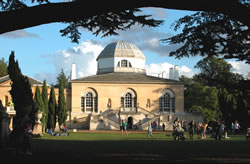Iconic building will be made into metal pin alongside Olympic 2012 logo
|
London 2012 Organising Committee and London Councils today announced the landmarks chosen by Londoners to feature in a celebratory set of London 2012 ‘Landmark London’ pin badges to go on sale next year.
Chiswick House has been chosen as Hounslow Borough's landmark after votes were cast by residents from a list of local nominations.
Other winning landmarks, one from each London Borough, range from visitor attractions, theatres and museums to windmills, clock towers and bridges including Ealing Studios, Hammersmith Bridge and Richmond Park.
Sebastian Coe, Chair of the London 2012 Organising Committee, said, “The landmarks chosen by the public for the pin set showcase what Londoners want the world to remember about their borough.”
Merrick Cockell, Chairman of London Councils added, "The huge variety of landmarks Londoners have chosen to represent their local area highlights the fantastic diversity we enjoy in the capital. From iconic stations to film studios or historic parkland – London has it all, and we can’t wait to showcase it to the world in 2012.”
Chiswick House will be re-created into a metal pin form alongside the London 2012 logo. Designs will be unveiled early next year by London 2012 and London Councils.
London Borough of Hounslow: Chiswick House
Built in the mid-1700's by Sir Edward Seymour, the house is considered to be the finest surviving example of Palladian architecture in Britain.
London Borough of Ealing: Ealing Studios. One of the great names in British entertainment, Ealing Studios is famous around the world as the home to the great Ealing comedies of the 1940's and 1950's. It s the oldest film studio in the world still in production.
London Borough of Hammersmith and Fulham: Hammersmith Bridge. Hammersmith Bridge was built in 1887 as a replacement for the original suspension bridge dating from 1827. The present bridge was designed by Sir Joseph Bazalgette.
November 3, 2009
